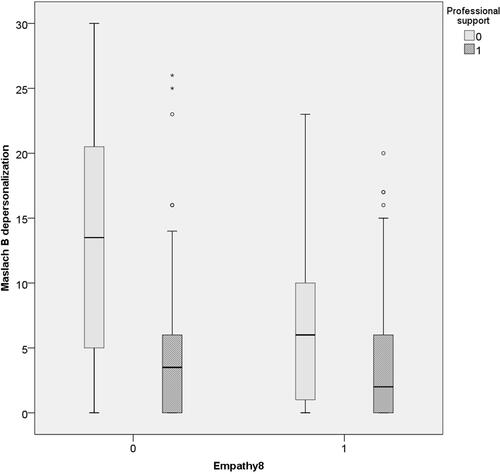Figures & data
Table 1 Study Participants: Descriptive Statistics for Socio-Demographic and Professional Data
Table 2 Anxiety, Burnout, Stress, Resilience, and Empathy Among the Study Participants: Scale Measurements
Table 3 Anxiety, Burnout, Stress, Resilience, and Empathy Across the Professional Status Categories
Table 4 Anxiety, Burnout, Stress, Resilience, and Empathy in Relation to Coordination Responsibilities and Red Area Activity
Table 5 Anxiety, Burnout, Stress, Resilience, and Empathy in Relation to the Perceived Support from the Professional Environment or the Family, Friends, and Acquaintances
Table 6 The Logistic Regression Model for Empathy. A Step-Wise Analysis Was Conducted, Based on the Akaike Information Criterion: For Models 1, 2, and 3, Only Variables That Remained in the Model are Shown. In Model 1, The Professional Support Was Statistically Significant, Almost Doubling the Odds of Empathy. In Model 3, The Effect of Professional Support Became Less Relevant for the Empathy and the Increase in Burnout-Depersonalization Accounted for the Loss of Empathy, with High Statistical Significance. Exp (B) is Equivalent to the Odds Ratio (OR), a Measure of Relationship’s Strength Between the Predictors and Binary Empathy8 Outcome
Figure 1 The triad-type relationship between perceived professional support, burnout-depersonalization, and empathy. The boxes are proportional to the inter-quartile range (IQR) with medians marked in-between, and the whiskers are proportional to 1.5*IQR (or trimmed to the minimum or maximum values). The bullets and stars are outliers and extreme values, respectively.

Table 7 Direct and Causal Mediation Effects of Professional Support on the Empathy, with Burnout-Depersonalization as the Mediator. Bias Corrected and Accelerated (BCa) Method of Bootstrap Re-Sampling (1000 Samples) Was Applied to Determine the 95% Confidence Intervals
Figure 2 Causal mediation model for the role of burnout-depersonalization on the association between the professional support and the empathy of healthcare professionals: two causal paths feed into the outcome variable (ie the empathy).

Figure 3 Direct and causal mediation effects of professional support on the empathy. Abbreviations: ACME, average causal mediation effects; ADE, average direct effects. Each estimate value is shown with bullets, with the 95% confidence intervals as horizontal lines. Intervals for the situation with no perceived professional support are shown in dotted lines. The no effect reference is shown as a vertical dotted line.

